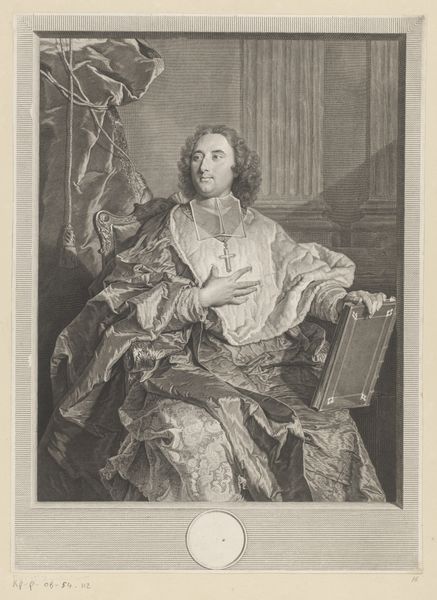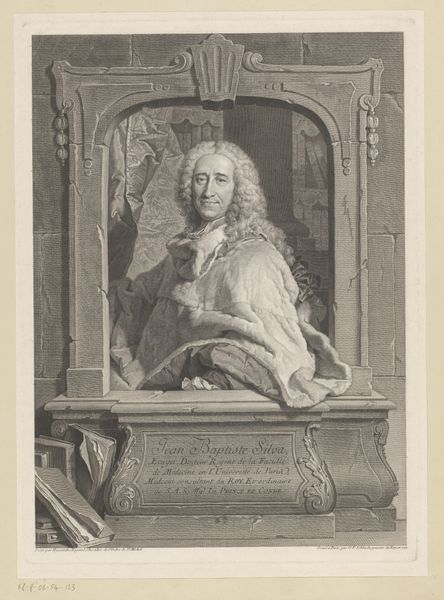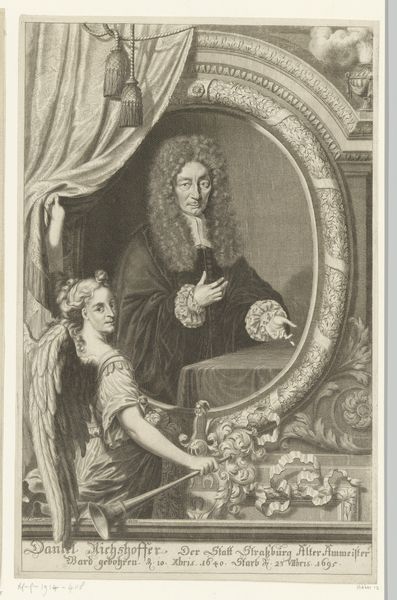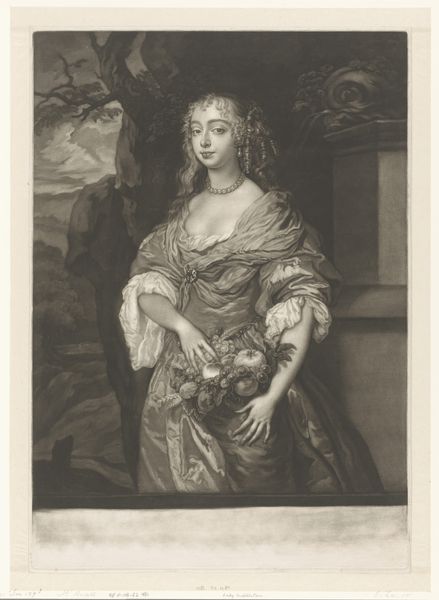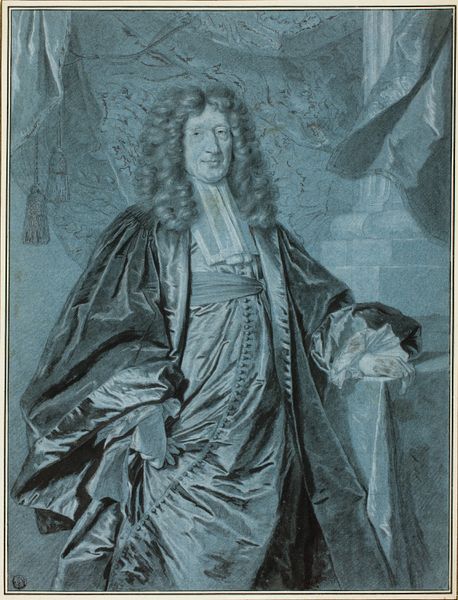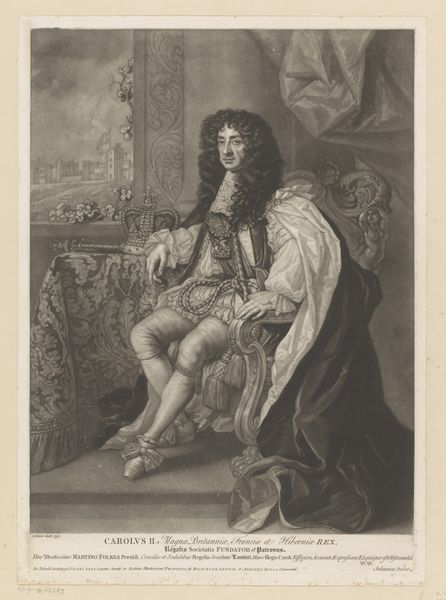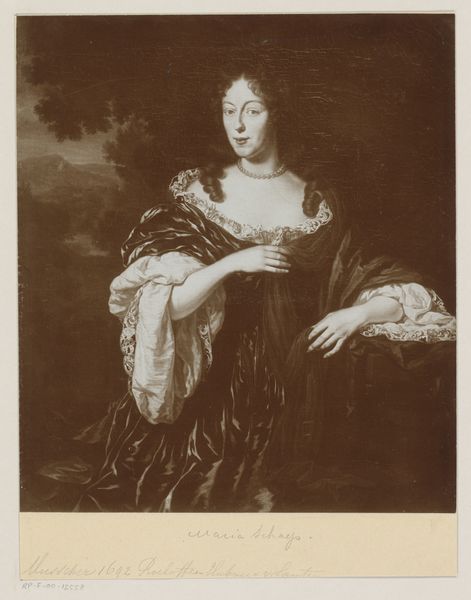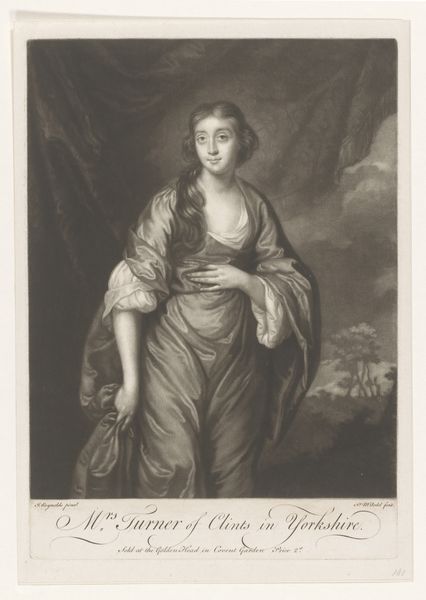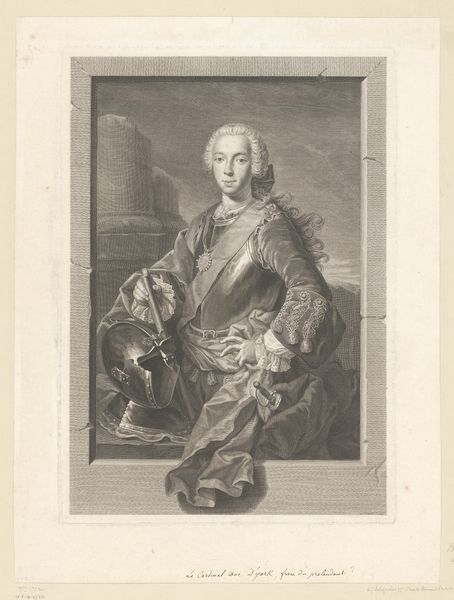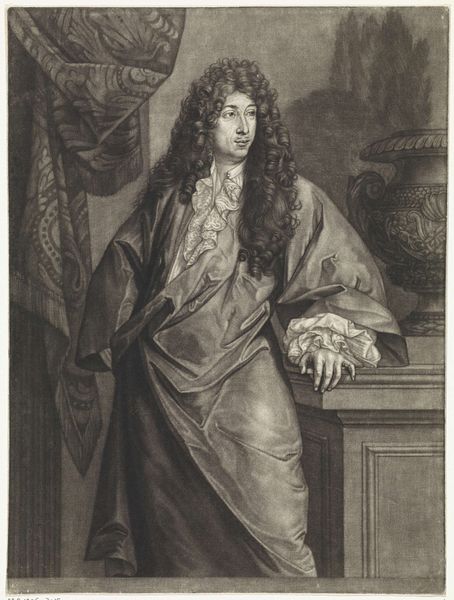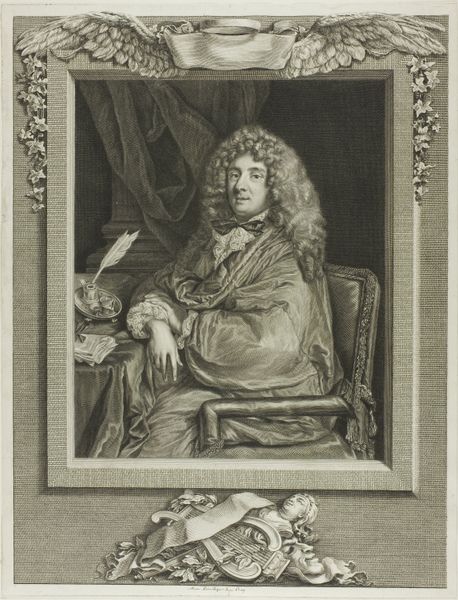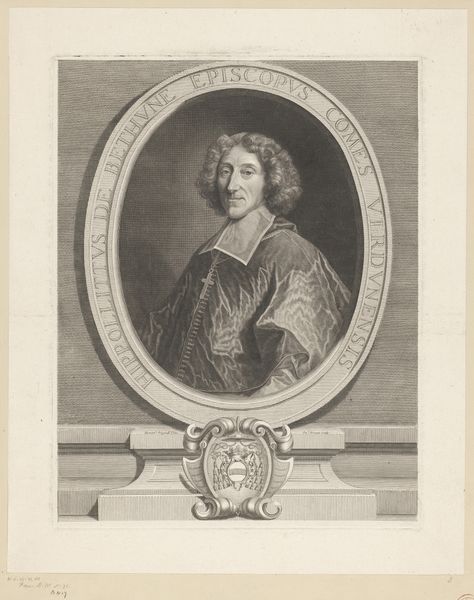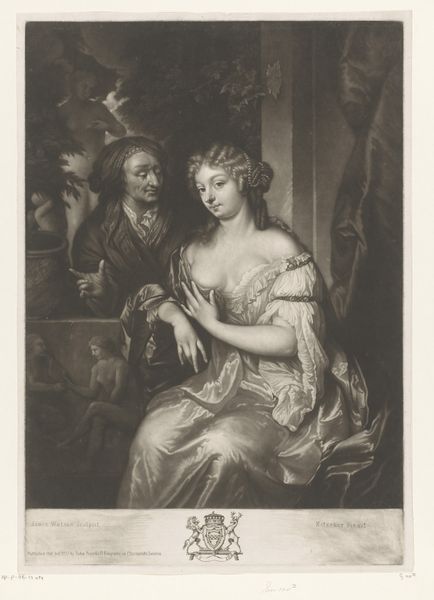
sculpture
#
portrait
#
portrait reference
#
dark-toned
#
unrealistic statue
#
portrait head and shoulder
#
earthy tone
#
sculpture
#
men
#
earthy
#
neutral brown palette
#
facial study
#
portrait art
#
warm toned green
Dimensions: 49 3/4 x 40 1/2 in. (126.4 x 102.9 cm)
Copyright: Public Domain
Sir Peter Lely painted this portrait of Sir Henry Capel in England, sometime in the mid to late 17th century. The portrait's visual language, with its classical sculpture and rich fabrics, speaks volumes about Capel's social standing. But it also provides insight into the values of the English aristocracy during the Restoration period. Following the austere years of Puritan rule, there was a renewed emphasis on worldly pleasures and the arts. Lely, as court painter, was instrumental in shaping the visual identity of this era. Consider the institutions that supported this kind of artistic production. Aristocratic patronage, the Royal court, and the emerging art market, all played a role in shaping Lely's career and the art he produced. These portraits weren't just about capturing a likeness; they were about constructing a public image, reinforcing social hierarchies, and communicating political allegiances. Historians can delve into estate records, letters, and political pamphlets to understand better the social and institutional contexts in which art like this was made. Only then can we fully appreciate the complex interplay between art, power, and society in 17th-century England.
Comments
No comments
Be the first to comment and join the conversation on the ultimate creative platform.

